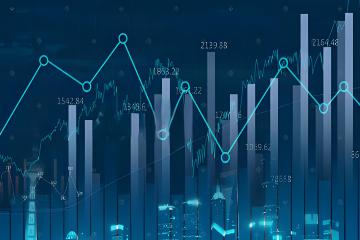The remarks made by Federal Reserve Chair Jerome Powell on Wednesday starkly contrasted with his encouraging words that once buoyed financial markets a year agoInvestors were taken aback by his cautious stance on expected interest rate cuts in 2025. This sudden shift in tone has left the market grappling with uncertainty, leading to tumultuous reactions across the board.
Following Powell's statements, U.S. stock indices plunged by 3%, while bond prices took a significant hit, pushing the yield on the benchmark 10-year Treasury note to its highest point in seven monthsThis sharp decline marked one of the most severe downturns since the early days of the pandemic, clearly illustrating how the optimistic, high-risk investing environment of the past two years is now facing a formidable challenge.
This current turmoil in the financial markets reflects the extent to which investors have come to depend on ongoing monetary policy easing
Investors had anticipated that the Federal Reserve would implement further rate cuts to boost asset prices robustlyThe reality, however, is far from their expectationsThe Fed has signaled clearly that only two rate cuts are expected over the next 12 months, which has nearly dashed prevailing hopes among stakeholdersIn this challenging environment, investors are now pressed to rethink their strategies, exploring new avenues and responses based on the prevailing market dynamics.
“The market was unprepared for this statement from the Fed,” remarked Tom di Galoma, who leads fixed income at Curvature Securities. “Powell is taking a neutral stance, waiting for the next administration to push their agenda before determining what actions might be necessary.”
Indeed, when Powell spoke of a “new phase of monetary policy” during Wednesday's press conference, it wasn't entirely unexpected
- Dollar/Yen Hits Five-Month High
- Slight Decline in the Dollar Index
- AI Revolutionizes Home Decoration
- The Secret Behind Visual China's Stock Surge
- Dollar Retreats, Oil Prices Rebound
Economic data continues to indicate robust strength within the U.S. economy, alongside persistently high inflation that exceeds the Fed's 2% targetSince the Fed's first rate cut in mid-September, yields on 10-year Treasury bonds have increased by about 75 basis points within the vast $29 trillion U.S. bond market.
Yet, the market's shocked reaction to the Fed's apparent nearing of the end of the rate-cut cycle was palpableNow, swap markets imply expectations for unfunded cuts of less than two instances of 25 basis points in 2025, even undercutting the projections illustrated in the Fed’s own “dot plot” released on WednesdayThere were even substantial transactions in options markets related to the overnight financing rate, indicating large bets on the commencement of a new rate hike cycle as early as next year.
“The Fed seems set to follow a very cautious route,” Chris Ahrens from Stifel Nicolaus & Co. expressed. “Inflation appears to be more resilient than they initially anticipated, and upcoming political dynamics add complexity to the short-term projections.”
As recent market trends have unfolded, the landscape has become increasingly fluid
The U.S. dollar index has risen fiercely, soaring to unprecedented levels not seen since 2022. Consequently, major currencies like the euro, British pound, and Swiss franc have all faced significant declines, with drop-offs exceeding 1%.
Wall Street's risk assets have not been spared either; following the Fed's initial rate cuts this year, speculative buying had surged, as investors forecasted that these policies would stimulate economic growthThe Goldman Sachs most-shorted stock index fell by 4.9%, representing its worst performance since February, while a basket of underperforming tech stocks plummeted by 6.4%, marking its most significant drop in two yearsNotably, Tesla's stock dipped by 8.3%, and Bitcoin saw a decline of 5% from a near $108,000 peak.
“Typically, when market sentiment becomes overly exuberant, a negative catalyst can lead to a market collapse, and this is the effect of hawkish rhetoric,” explained Kevin Gordon, a senior investment strategist at Charles Schwab & Co. “The most speculative segments of the market are often the ones inflated by excessive emotion, so it's not surprising to see them taking a hit.”
Volatility surged as well, with the Cboe VIX index breaking past 28, its highest level since the market turmoil in August
The cost of protection on the S&P 500 skyrocketed, with calls on VIX options outpacing puts by a two-to-one marginThe VVIX, an indicator of the implied volatility of VIX options, also hit its highest point since August.
Bank stocks took a noticeable hit, with the KBW Bank Index dropping by 4.3%. Major Wall Street banks, including JPMorgan Chase and Goldman Sachs, all registered declines of at least 3%.
“The stock market was already severely overbought ahead of the meeting, providing a prime opportunity for some profit-taking among investors,” noted Jamie Cox, managing partner at Harris Financial Group.
In summary, the sharp shift in policy outlook from the Federal Reserve has sent shockwaves through the financial marketsInvestors are left reassessing their strategies as uncertainty looms regarding future rate changes and economic conditionsThe recent downturn serves as a reminder of the market's vulnerability to changing economic narratives and the delicate balance between monetary policy and financial stability.
